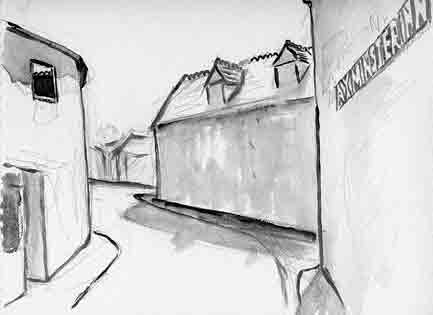The Lyme Maze Game

Setting out, you can't help stepping to the rhythm of some catchy tune still drifting from the music stall behind you—"Yesterday is history, Tomorrow is a mystery, I know you know I love you . . . " You are going along Axminster's Silver Street, a short sinuous way that is in the thick of the town, thus tending to disprove the story about Lyme's Silver Street that the name represents Latin silva, "forest". At the first curve, opposite the minster, is the building where in 1755 Thomas Whitty started the carpet industry for which Axminster became famous. He had been inspired by seeing in London a beautiful hand-knotted Turkish carpet. The first Axminster carpet was made for the Independent Chapel in Chard Street, of which Whitty was a member, and it was paraded there through the town and laid over the pews for display. The bells of the nearby minster were rung, and that continued to be done each time a carpet was finished. In 1789 king George III came walking along from the George Hotel, watched by crowds, to visit the factory. Actually the building you see isn't the original: it burned down in 1826. And Axminster Carpets went bankrupt, till it was revived on a different site by Harry Dutfield in 1936. At the next corner—
—you come up behind a sign which, if you turn to look at it, says about the way you have just come along: "street congested with market stalls" (no exaggeration) and points to the alternative, Church Street merging from the right. You know this only leads back to the town centre, so you go on along the combined street. These little Axminster streets are just right. Very shortly you come tto a crossing where you can turn left or right. |
